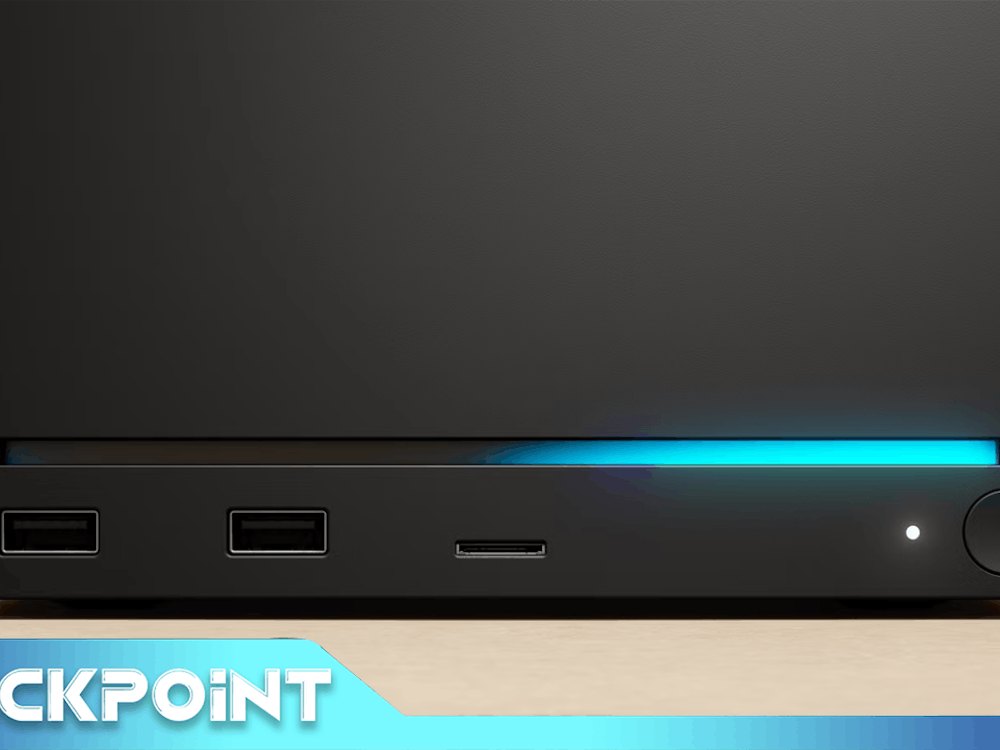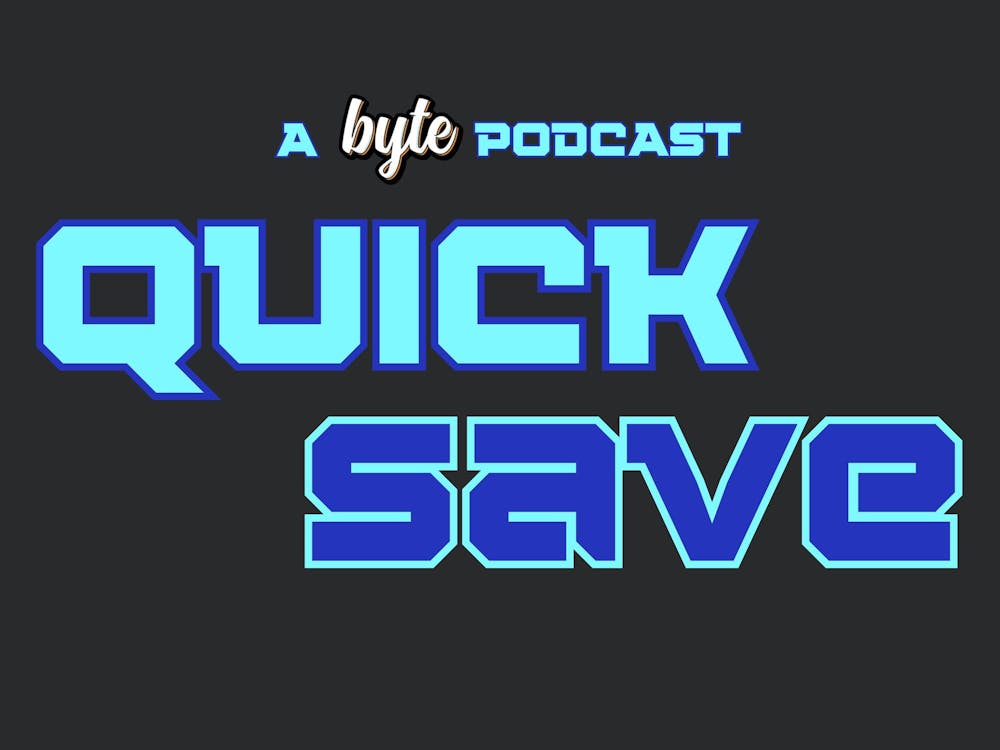by Nolan Leahy The iPhone X reveal showed off some promising aspects. Below are compiled thoughts of what we thought was going to happen before Tuesday’s announcement as well as concluding thoughts of the phone’s pros and cons. For more information regarding the iPhone X’s details, be sure to check out Eben Griger’s article on the subject. Here’s a list of what we thought the iPhone X would have:
- Edge-to-edge display.
- Leaks suggest that it comes in white, black, copper or gold.
- No home button
- ‘Super fast’ facial Recognition software
- A SmartCam, which apparently is able to identify various objects within a scene.
- Augmented Reality Directions, which enable the phone’s camera to display a path in front of you so that you can follow it.
- Wireless Charging
- Faster Processor
- Glass backed body
- Animoji (animated messaging)
- Operating System is iOS 11
- Expected Cost is over $1,000
- No headphone jack
 Image from Trusted Reviews[/caption]
While some of these features look promising, it’s difficult to say that this phone will be an astounding success, and here’s why.
If Apple decided to go with facial recognition, it’s a bit risky. Other companies have previously tried facial recognition to various extents, and Microsoft’s attempt with their Kinect was fairly decent.
The Kinect features facial recognition software that allows Xbox users to sign in without touching a single button. It was one of their big selling points when discussing the Xbox One back in 2013 when the Kinect was initially part of the bundle.
https://twitter.com/griselmania/status/909451362378715136
Despite the innovation, it proved to be a bit problematic at times, which is why the iPhone X deserves some skepticism. Too many times with the Kinect have I personally been recognized as the wrong person, or another person was able to log into my account locally. It also may not work well in the dark considering the Kinect’s issues with lighting, so unlocking the phone in the dark could be an issue if using a password becomes a tedious option.
If the iPhone X’s facial recognition is accurate and as fast as the ‘millionths of a second’ report, then it will be an incredibly welcomed feature to the newest generation.
Another point of criticism is the wireless charging rumor. If Apple goes ahead and ditches the charger port, which is doubtful, it will anger the consumer base even more considering that there won’t be a place to plug in wired headphones. Forcing change through a hardware product doesn’t always work out, even if the next iPhone is intended to be more powerful. If Microsoft can get slammed by the competition for forcing consumers to use Kinect, then Apple can likewise get slammed by the competition for forcing a completely wireless phone onto consumers.
https://twitter.com/kawtherhaji/status/907665788479459330
Lastly, the price is something to be concerned about. If the speculation is true and the phone does cost over $1,000, then I think it’s going to be a more difficult sell than Apple realizes because it’s a bit intimidating to go over the previous three digit price tag.
That’s what was initially thought on Monday.
What was revealed on Tuesday brought the rumors to an abrupt halt with Apple’s new generation of smart phones. There are some promising features with the iPhone X (which is pronounced “the iPhone 10”), but also some others that still provoke anxiety.
The edge to edge display, facial recognition, wireless charging, faster processing power, glassed back and Animoji all came to fruition within Tuesday’s announcement. In addition, there’s also an improved battery life, better camera improvements with light capturing, and elemental resistance protection.
[caption id="" align="aligncenter" width="496"]
Image from Trusted Reviews[/caption]
While some of these features look promising, it’s difficult to say that this phone will be an astounding success, and here’s why.
If Apple decided to go with facial recognition, it’s a bit risky. Other companies have previously tried facial recognition to various extents, and Microsoft’s attempt with their Kinect was fairly decent.
The Kinect features facial recognition software that allows Xbox users to sign in without touching a single button. It was one of their big selling points when discussing the Xbox One back in 2013 when the Kinect was initially part of the bundle.
https://twitter.com/griselmania/status/909451362378715136
Despite the innovation, it proved to be a bit problematic at times, which is why the iPhone X deserves some skepticism. Too many times with the Kinect have I personally been recognized as the wrong person, or another person was able to log into my account locally. It also may not work well in the dark considering the Kinect’s issues with lighting, so unlocking the phone in the dark could be an issue if using a password becomes a tedious option.
If the iPhone X’s facial recognition is accurate and as fast as the ‘millionths of a second’ report, then it will be an incredibly welcomed feature to the newest generation.
Another point of criticism is the wireless charging rumor. If Apple goes ahead and ditches the charger port, which is doubtful, it will anger the consumer base even more considering that there won’t be a place to plug in wired headphones. Forcing change through a hardware product doesn’t always work out, even if the next iPhone is intended to be more powerful. If Microsoft can get slammed by the competition for forcing consumers to use Kinect, then Apple can likewise get slammed by the competition for forcing a completely wireless phone onto consumers.
https://twitter.com/kawtherhaji/status/907665788479459330
Lastly, the price is something to be concerned about. If the speculation is true and the phone does cost over $1,000, then I think it’s going to be a more difficult sell than Apple realizes because it’s a bit intimidating to go over the previous three digit price tag.
That’s what was initially thought on Monday.
What was revealed on Tuesday brought the rumors to an abrupt halt with Apple’s new generation of smart phones. There are some promising features with the iPhone X (which is pronounced “the iPhone 10”), but also some others that still provoke anxiety.
The edge to edge display, facial recognition, wireless charging, faster processing power, glassed back and Animoji all came to fruition within Tuesday’s announcement. In addition, there’s also an improved battery life, better camera improvements with light capturing, and elemental resistance protection.
[caption id="" align="aligncenter" width="496"] Image from 9to5Mac[/caption]
Despite these factors, my concerns with facial recognition will still stay because I’m a bit of a skeptic. If Microsoft can have issues with it, it doesn’t mean that Apple’s going to breeze on by with the feature; although, I could be wrong. Video footage of the Animoji feature seems to handle facial recognition in the most impressive way to date. What does bother me though, are various scenarios that deserve some additional scrutiny.
In the family setting, middle class parents could definitely purchase one of these. Could one of the children take a parent’s phone and unlock it while he or she is sleeping with facial recognition? It’s a bit of a disturbing thought because with that consideration a child could access a parent’s credit card account or make online purchases without a parent knowing (if they don’t wake up). It’s a bit of an extreme scenario and a bit alarming, but I believe that could be the most common case of phone insecurity if a parent isn’t careful. IPhones now are pretty quiet devices and can be freely accessed without making much noise, which should be a concern for vigilant parents who are considering purchasing this device.
[caption id="" align="aligncenter" width="720"]
Image from 9to5Mac[/caption]
Despite these factors, my concerns with facial recognition will still stay because I’m a bit of a skeptic. If Microsoft can have issues with it, it doesn’t mean that Apple’s going to breeze on by with the feature; although, I could be wrong. Video footage of the Animoji feature seems to handle facial recognition in the most impressive way to date. What does bother me though, are various scenarios that deserve some additional scrutiny.
In the family setting, middle class parents could definitely purchase one of these. Could one of the children take a parent’s phone and unlock it while he or she is sleeping with facial recognition? It’s a bit of a disturbing thought because with that consideration a child could access a parent’s credit card account or make online purchases without a parent knowing (if they don’t wake up). It’s a bit of an extreme scenario and a bit alarming, but I believe that could be the most common case of phone insecurity if a parent isn’t careful. IPhones now are pretty quiet devices and can be freely accessed without making much noise, which should be a concern for vigilant parents who are considering purchasing this device.
[caption id="" align="aligncenter" width="720"] Image from CNBC[/caption]
My other worries lie with the body and the wireless charging. With the upgraded resistance protection, how safe is an iPhone X from cracking? Scratching? High drops? If the phone itself is glass covered, then I can’t imagine it being as invincible as a LifeProof Case. If the phone itself isn’t durable enough to fit the needs of an average iPhone user, then they will need to purchase a case. With that in mind, creating a barrier between the phone and the wireless charger pad could make the wireless charging feature irrelevant. People may have to choose between a good case and the wireless charging feature.
Despite those worries, this phone does deserve praise with the camera improvements. The phone looks like it takes much crisper and more refined photos with better aims at capturing the light, which is every photographer’s main concern in low-level lighting areas. This could give Canon and Nikon a bit of a run for their money for the quality of picture presented. Also being able to change the background after the shot is an excellent feature that promises welcomed solitude within selfies.
https://twitter.com/Mazalthan/status/907678128826404865
Animoji seems like a fantastic addition to overall communication and creates a personal touch to all of the facial emojis used.
The longer battery life is a bit self-explanatory, but yay.
The last part about the phone is a bit of an issue though, which is the price. At the end of the day, it comes down to the wallets, purses, and the 4,000 quarters from children’s piggy banks that are going to be able to pay for this thing. The 256 GB iPhone X will cost $1,149! While Apple thinks that this will be an outstanding success, it’s going to be difficult to justify a price that costs more than other technology that’s used by the public. With that amount of money, an individual could buy all sorts of things according to Matthew Yapp’s article. If the price goes down or the software is incredibly impressive on all fronts, then I imagine this product doing well; otherwise, I wouldn’t expect a holiday stampede from shoppers.
Image from CNBC[/caption]
My other worries lie with the body and the wireless charging. With the upgraded resistance protection, how safe is an iPhone X from cracking? Scratching? High drops? If the phone itself is glass covered, then I can’t imagine it being as invincible as a LifeProof Case. If the phone itself isn’t durable enough to fit the needs of an average iPhone user, then they will need to purchase a case. With that in mind, creating a barrier between the phone and the wireless charger pad could make the wireless charging feature irrelevant. People may have to choose between a good case and the wireless charging feature.
Despite those worries, this phone does deserve praise with the camera improvements. The phone looks like it takes much crisper and more refined photos with better aims at capturing the light, which is every photographer’s main concern in low-level lighting areas. This could give Canon and Nikon a bit of a run for their money for the quality of picture presented. Also being able to change the background after the shot is an excellent feature that promises welcomed solitude within selfies.
https://twitter.com/Mazalthan/status/907678128826404865
Animoji seems like a fantastic addition to overall communication and creates a personal touch to all of the facial emojis used.
The longer battery life is a bit self-explanatory, but yay.
The last part about the phone is a bit of an issue though, which is the price. At the end of the day, it comes down to the wallets, purses, and the 4,000 quarters from children’s piggy banks that are going to be able to pay for this thing. The 256 GB iPhone X will cost $1,149! While Apple thinks that this will be an outstanding success, it’s going to be difficult to justify a price that costs more than other technology that’s used by the public. With that amount of money, an individual could buy all sorts of things according to Matthew Yapp’s article. If the price goes down or the software is incredibly impressive on all fronts, then I imagine this product doing well; otherwise, I wouldn’t expect a holiday stampede from shoppers.
Sources: Byte, Telegraph.co.uk, Metro, Macworld, Mashable News Images: Twitter, Trusted Reviews, CNBC, 9to5Mac



















